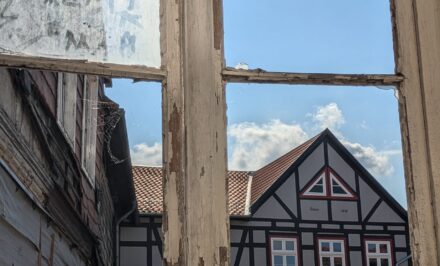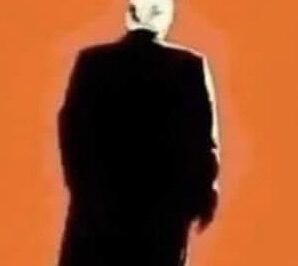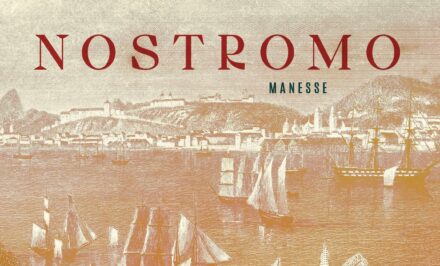WEB
David Whish-Wilson
Benjamin Whitmer
Robert Wilson
Thomas Wörtche
 WEB
WEB
Step Acrosss the Border: Auch das ist deutsches Kino! Ich kannte das Duo Nicolas Humbert und Werner Penzel und den genialischen Anarcho-Musiker Fred Frith schon zuvor und zählte 1990 daher zu den ersten, die sich den Film reinzogen – und fortan schwelgten. Wenn auch nicht einmal annähernd genug, wie sich jetzt herausstellen sollte. Vor einem Jahr, am Tag vor Heiligabend, sahen wir uns die DVD an – und japsten schier vor Glück. Und eine Woche darauf, an Silvester, als wir unser Divertimento „zwischen den Gängen“ berieten – noch einmal unseren Klassiker Dylan Thomas Reading Under Milkwood, Schuberts Winterreise, Walt Whitman, Lautréamont, Keith Jarrett … – riefen wir auf einmal wie aus einem Munde: Step Across the Border! Ja! Und es ist immer noch – ein großer Schritt für die Menschheit!
 In den Gängen, oder wie ein absoluter Nicht-Ort – die anonyme Regalwelt eines Discounters – magische zwei Stunden lang zum Nabel der Welt wird. Wann hat es das zuletzt gegeben: Ein deutscher Film, in dem Arbeit nicht nur vorgeführt (statt bloß vorgetäuscht) wird, und der praktisch ausnahmslos an einem Arbeitsplatz spielt? Die Spur führt weit zurück: Das Brot des Bäckers 1976, Spur der Steine 1966 (DDR). Allein das schon läßt einen Regisseur wie Thomas Stuber wie einen Diamanten leuchten – der zudem bereits mit dem kleinen Hardcore-Pathos-Streifen Herbert (verkörpert von dem wahnwitzigen Peter Kurth) sein Potential in Beweis gestellt hatte. Und einen danach umso mehr mit entweder biederer oder vollverunglückter TiVi-Konfektionsware ratlos zurückließ. Es wird also demnächst spannend; oder auch nicht. So oder so: der deutsche Film des Jahres.
In den Gängen, oder wie ein absoluter Nicht-Ort – die anonyme Regalwelt eines Discounters – magische zwei Stunden lang zum Nabel der Welt wird. Wann hat es das zuletzt gegeben: Ein deutscher Film, in dem Arbeit nicht nur vorgeführt (statt bloß vorgetäuscht) wird, und der praktisch ausnahmslos an einem Arbeitsplatz spielt? Die Spur führt weit zurück: Das Brot des Bäckers 1976, Spur der Steine 1966 (DDR). Allein das schon läßt einen Regisseur wie Thomas Stuber wie einen Diamanten leuchten – der zudem bereits mit dem kleinen Hardcore-Pathos-Streifen Herbert (verkörpert von dem wahnwitzigen Peter Kurth) sein Potential in Beweis gestellt hatte. Und einen danach umso mehr mit entweder biederer oder vollverunglückter TiVi-Konfektionsware ratlos zurückließ. Es wird also demnächst spannend; oder auch nicht. So oder so: der deutsche Film des Jahres.
 Carol: Heutzutage einen Douglas-Sirk-Film aus den 1950ern ohne Nostalgie – und Schuldbewußtsein – herzustellen: das ist wahrlich ein Kunststück. Nicht eine Sekunde lang fühlt man sich bei Todd Haynes in einem „Kostümfilm“; unter solch einer Regie wäre selbst ein Remake von Casablanca vorstellbar.
Carol: Heutzutage einen Douglas-Sirk-Film aus den 1950ern ohne Nostalgie – und Schuldbewußtsein – herzustellen: das ist wahrlich ein Kunststück. Nicht eine Sekunde lang fühlt man sich bei Todd Haynes in einem „Kostümfilm“; unter solch einer Regie wäre selbst ein Remake von Casablanca vorstellbar.
Hell Or High Water: Man glaubt, es gibt sie nicht mehr, die „guten alten Zeiten“, als Filme noch so selbstverständlich daher kamen wie Charley Varrick und The Outfit. Und traut seinen Augen nicht, wenn der Schotte David Mackenzie – der zu Hause den wunderbaren und so „europäischen“ Young Adam gedreht hatte – viele Jahre später im Flachland Texas loslegt, als hätten schon seine Urgroßeltern dort ihre Stiefel geschnürt. Kein Wenders-Kitsch und keine Pseudo-Authentizität, das pure Vergnügen. PS: Mackenzies furioser Gefängnisfilm Starred Up (2013) ist ein Genrefilm, das keinerlei Vorbild kennt; das ist äußerst rar! PPS: In Wind River ist der Amerikanische Traum nicht einmal ausgeträumt – er war noch nie angekommen. Von Taylor Sheridan, dem Drehbuchautor von Hell Or High Water, ohne Zweifel das Debüt des Jahres.
Lala Land: Busby Berkeley. Astaire. Minelli. Donen. Und eine kurze, schöne Reminiszenz an Jacques Demy. Lala Land ist die Sorte Film, die man in diesem Jahrtausend schlichtweg nicht mehr für möglich gehalten hat. Daß einer ihn machen will. Und daß man ihn ihn machen läßt. Ein absoluter Glücksfall.
 Pickup on South Street: Mein Lieblings-Fuller. Einmal, unvergeßlich, sah ich ihn im Schwabinger Türkendolch eine Woche lang jeden Abend in der Spätvorstellung. Und genau zur gleichen Zeit setzte jemand, der in der Provinz Zur Sache Schätzchen mit Werner Enke gesehen hatte, alle Hebel in Bewegung, am Schauplatz des Films, d.h. im Umfeld des Türkendolchs, ein Quartier zu finden; was auch gelang (und heute ein Ding der Unmöglichkeit wäre). Er und ich wurden – und sind noch heute – Freunde. Apropos: Ähnlich wahnwitzige Filme über Taschendiebe gibt es nur noch von Bresson und Oshima.
Pickup on South Street: Mein Lieblings-Fuller. Einmal, unvergeßlich, sah ich ihn im Schwabinger Türkendolch eine Woche lang jeden Abend in der Spätvorstellung. Und genau zur gleichen Zeit setzte jemand, der in der Provinz Zur Sache Schätzchen mit Werner Enke gesehen hatte, alle Hebel in Bewegung, am Schauplatz des Films, d.h. im Umfeld des Türkendolchs, ein Quartier zu finden; was auch gelang (und heute ein Ding der Unmöglichkeit wäre). Er und ich wurden – und sind noch heute – Freunde. Apropos: Ähnlich wahnwitzige Filme über Taschendiebe gibt es nur noch von Bresson und Oshima.
Harun Farocki: Wir haben uns geliebt – wenn auch nicht immer verstanden. Während er nach Anerkennung gierte, suchte ich eher … Erfüllung. Während ich ihm seine Widerspenstigkeit und Betriebsamkeit neidete, war er eifersüchtig auf meine „innere Ruhe“ und „Weltläufigkeit“. Gemeinsame Projekte gab es zuhauf, aber realisiert haben wir leider nie welche. Die wiederkehrenden Topoi unserer unregelmäßigen Begegnungen waren Bad Godesberg (wo er eine schwierige Jugend nach einer Kindheit in Indien und Indonesien verbracht hatte, und ich die zwei letzten Jahre vor meiner „Reifeprüfung“ in einem Internat) und Vietnam, das uns seit seinem Krieg gegen Amerika voll in Bann geschlagen hatte (später studierte er aufmerksam unser Vietnam-Buch, ehe er mir kurzfristig seinen Aufenthalt dort ankündigte). Also: nicht Filme oder Arbeit oder Menschen, sondern: Orte, Erinnerungen, Lokalitäten.
Gehört in jeden Haushalt: DVD-Schuber Harun Farocki Filme 1967-2005 mit 20 Filmen auf 5 Discs.
 Sète: Für (uns) Schmuggler einst der wichtigste Mittelmeer-Hafen Frankreichs – und noch heute, per Fährschiff, das Tor nach Tanger. Anfang des Jahres ein Wiedersehen nach langer Zeit. Hafen, Canal Midi, Fruits de Mer: immer noch eine Freude. Auf dem Stadtplan entedecke ich zwischen Bucht und Lagune die kleine Halbinsel La Pointe Courte– Moment, da war doch was: hatte nicht der erste Film von Agnès Varda so geheißen? Das alte Fischerquartier, damals noch geprägt von Migranten aus Süditalien, heute von franzöischen Kleinbürgern, ist eine Offenbarung. Und im Lauf der immer euphorischer werdenden Begehung wandelt sich die vage Erinnerung an Agnès Vardas Film (der im übrigen heute eine Gasse in La Pointe Courte gewidmet ist) allmählich vom strengen s/w-Dokument zum emotionalen Doku-Drama in Farbe (mit einem blutjungen Philippe Noiret). Am letzten Abend in Sète, geradezu wie bestellt, das gastronomische Highlight des Jahres, in dem Bistro einer Fischerfamilie, die seit Generationen auf Thunfisch geht: Kama. Der extrem gemaserte und durchblutete Kragen – gleich hinter den Kiemen, mitsamt dem Knochen wie eine Lamm- oder Kalbshaxe im Ofen geröstet – erwies sich als das saftigste und intensivste Stück Fisch, das wir je kosten durften.
Sète: Für (uns) Schmuggler einst der wichtigste Mittelmeer-Hafen Frankreichs – und noch heute, per Fährschiff, das Tor nach Tanger. Anfang des Jahres ein Wiedersehen nach langer Zeit. Hafen, Canal Midi, Fruits de Mer: immer noch eine Freude. Auf dem Stadtplan entedecke ich zwischen Bucht und Lagune die kleine Halbinsel La Pointe Courte– Moment, da war doch was: hatte nicht der erste Film von Agnès Varda so geheißen? Das alte Fischerquartier, damals noch geprägt von Migranten aus Süditalien, heute von franzöischen Kleinbürgern, ist eine Offenbarung. Und im Lauf der immer euphorischer werdenden Begehung wandelt sich die vage Erinnerung an Agnès Vardas Film (der im übrigen heute eine Gasse in La Pointe Courte gewidmet ist) allmählich vom strengen s/w-Dokument zum emotionalen Doku-Drama in Farbe (mit einem blutjungen Philippe Noiret). Am letzten Abend in Sète, geradezu wie bestellt, das gastronomische Highlight des Jahres, in dem Bistro einer Fischerfamilie, die seit Generationen auf Thunfisch geht: Kama. Der extrem gemaserte und durchblutete Kragen – gleich hinter den Kiemen, mitsamt dem Knochen wie eine Lamm- oder Kalbshaxe im Ofen geröstet – erwies sich als das saftigste und intensivste Stück Fisch, das wir je kosten durften.
 Charlie Haden: Als Ornette Coleman 1960 für sein epochales, frei improvisiertes Album Free Jazz einen Bassisten suchte, der seiner frei(wild)en Combo Rhythmus und Ordnung, aber auch Genialität verleihen sollte, entschied er sich nach langen Zweifeln für einen krassen Außenseiter – nämlich einen Weißen. Wobei nicht allein der schwarze „Verräter“, sondern auch der weiße „Dissident“, der nun Tag für Tag in das vom Rest Manhattans wie die Pest gemiedene Feindesland Harlem eintauchte, den Boykott seiner jeweiligen Landsleute riskierte. Später „bändigte“ und beflügelte Haden so verquere Genies wie Miles Davis oder Keith Jarrett und gründete 1969 als Bandleader das dezidiert politische
Charlie Haden: Als Ornette Coleman 1960 für sein epochales, frei improvisiertes Album Free Jazz einen Bassisten suchte, der seiner frei(wild)en Combo Rhythmus und Ordnung, aber auch Genialität verleihen sollte, entschied er sich nach langen Zweifeln für einen krassen Außenseiter – nämlich einen Weißen. Wobei nicht allein der schwarze „Verräter“, sondern auch der weiße „Dissident“, der nun Tag für Tag in das vom Rest Manhattans wie die Pest gemiedene Feindesland Harlem eintauchte, den Boykott seiner jeweiligen Landsleute riskierte. Später „bändigte“ und beflügelte Haden so verquere Genies wie Miles Davis oder Keith Jarrett und gründete 1969 als Bandleader das dezidiert politische 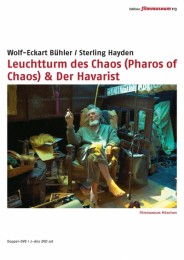 Free Liberation Orchestra. Scheinbar eine völllig andere Welt ist das anrührende Hausmusik-Album Rambling Boy (2008), auf dem Haden mit Freunden und Verwandten Folksongs intoniert. Dabei stand er schon als Zweijähriger(!) mit der Haden Family vor den Mikrophonen und auf den Bühnen des Mittelwestens (eine Kostprobe aus dem Jahr 1939 ist enthalten). Schöner, weil zugleich professionell und amateurhaft (und vor allem: total unkommerziell) kann Folk nicht sein.
Free Liberation Orchestra. Scheinbar eine völllig andere Welt ist das anrührende Hausmusik-Album Rambling Boy (2008), auf dem Haden mit Freunden und Verwandten Folksongs intoniert. Dabei stand er schon als Zweijähriger(!) mit der Haden Family vor den Mikrophonen und auf den Bühnen des Mittelwestens (eine Kostprobe aus dem Jahr 1939 ist enthalten). Schöner, weil zugleich professionell und amateurhaft (und vor allem: total unkommerziell) kann Folk nicht sein.
Leser der Filmkritik kannten das Kürzel WEB und schätzten Wolf-Eckart Bühlers Texte über John Ford und seine Stock Company, zum Polizeifilm oder zu linken Filmemachern wie Leo Hurwitz, Irvin Lerner, Abraham Polonsky. Im Frühsommer 2016 zeigte das Filmmuseum München eine Retrospektive seiner Filme (Text von Alf Mayer dazu hier). Der beim US-Klassikerlabel Criterion digital remasterte John-Huston-Film „The Asphalt Jungle“ ist mit WEBs Dokumentarfilm „Pharos of Chaos“ (1982) über den Schauspieler Sterling Hayden gekoppelt, dem auch sein Film „Der Havarist“ (1983) dann galt. Beide Filme hat das Filmmuseum München 2018 digital restauriert als Doppel-DVD herausgebracht. Alf Mayer dazu bei CrimeMag: König ohne Untertanen, WEBs Nachruf auf Hayden in unserem Verlust-Special: „Vale, Wanderer!„
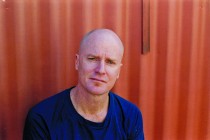 David Whish-Wilson: Masterclass
David Whish-Wilson: Masterclass
Kent Anderson – Green Sun. This was my first introduction to Kent Anderson’s writing, but I’ll be going back for more. Green Sun is a crime novel that works by deep characterisation and strong, concrete descriptive writing. Its melancholy tone perfectly suits the story of an older recruit going back to the streets of Oakland to get his hours in, before hopefully getting a better posting somewhere quiet. Anderson’s character, Hanson, is a Vietnam vet, former cop and academic much like the author himself. Hanson’s observations of his day-to-day feel authentic, unromantic and perfectly weighted. The story builds by accretion of detail rather than forced plotting. By turns brutal and tender, this was a standout in my reading this year.
The Deuce, Season Two, HBO. Fuck I love this show. I can’t remember the last time I watched television and savoured every second of every minute of every episode across an entire series. Hardly surprising given the quality of the writers (Megan Abbott’s episode was simply brilliant) and actors (Maggie Gyllenhaal is incredible) and the complexity of the story – the deft, multi-layered and patient narrative describing the birth of the modern porn industry, of various sub-cultures and their embeddedness in the political and social fabric of Times Square, NYC.
Steve Hawke, The Valley. My Fremantle Press stable-mate Steve Hawke has really lifted the bar with this multi-generational story of the Western Australian frontier, focussing on the Bunuba lands of the Kimberley region. Initiated by a brutal murder in the 1920s, the novel charts the consequences across four generation of a family whose secretive lives are centred on a hidden valley that once sheltered frontier war hero Jandamarra. As the descendants trickle from the valley to work the nearby cattle stations, an incident in Broome brings a father and son home to country, seeking answers. The narrative skilfully moves backward and forward through time, as well as laterally, resulting in a circular storytelling style that deftly gathers all the strands of history together as the novel veers toward its startling conclusion.
 Dorothy Porter, The Monkey’s Mask. For the hell of it I re-read this Australian crime-novel-in-verse from the late 90s, using it in effect as a late-night lullaby – reading a few pages before diving into sleep. Porter has sadly left the Australian literary scene, dying in 2008, but the enduring popularity of this novel is testament to her ability to communicate a fully-realised crime story using the most minimal of forms, and in language so spare and sharp that each phrase and image often suggests more than the pages of many fleshed-out doorstop crime novels by lesser writers – a real masterclass in creating atmosphere and character.
Dorothy Porter, The Monkey’s Mask. For the hell of it I re-read this Australian crime-novel-in-verse from the late 90s, using it in effect as a late-night lullaby – reading a few pages before diving into sleep. Porter has sadly left the Australian literary scene, dying in 2008, but the enduring popularity of this novel is testament to her ability to communicate a fully-realised crime story using the most minimal of forms, and in language so spare and sharp that each phrase and image often suggests more than the pages of many fleshed-out doorstop crime novels by lesser writers – a real masterclass in creating atmosphere and character.
Alan Carter, Heaven Sent. Carter just gets better with every new novel and his fourth Cato Kwong novel is evidence of that. Focussed largely on my Fremantle hometown among the city’s homeless population, the novel has a more fluid narrative style than previous work – with the POV shifting between a larger cast of characters, allowing Carter to get a rounded perspective on the policing of a series of brutal murders. This is great stuff, and fully justifies the rave reviews the novel’s been getting.
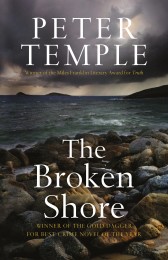 Peter Temple, The Broken Shore. With the passing of this great Australian crime writer earlier in the year, I went back and re-read my favourite Temple novels.The Broken Shoreis right up there (my favourite remains Shooting Star), displaying all of Temple’s characteristic wit, his nailing of the Australian vernacular in incredibly smart dialog, his effortless and sinuous prose that captures with perfect clarity the landscapes and homes of his Victorian Badlands, while devastatingly breaking down the way power and wealth operate in marginalising sectors of the Australian community. This was Temple’s break-through novel, winning him the British CWA Gold Dagger Award (the first Australian to do so), and all of its many plaudits are entirely deserved. While it’s sad to think that there will be no more Temple novels, rereading The Broken Shore demonstrated the pleasures that are still available to me in the future by regularly working through his considerable backlist. (John Harvey on CrimeMag about this novel, CrimeMag’s Farewell for Peter Temple, Dave Whish-Wilson in on it – the editors.)
Peter Temple, The Broken Shore. With the passing of this great Australian crime writer earlier in the year, I went back and re-read my favourite Temple novels.The Broken Shoreis right up there (my favourite remains Shooting Star), displaying all of Temple’s characteristic wit, his nailing of the Australian vernacular in incredibly smart dialog, his effortless and sinuous prose that captures with perfect clarity the landscapes and homes of his Victorian Badlands, while devastatingly breaking down the way power and wealth operate in marginalising sectors of the Australian community. This was Temple’s break-through novel, winning him the British CWA Gold Dagger Award (the first Australian to do so), and all of its many plaudits are entirely deserved. While it’s sad to think that there will be no more Temple novels, rereading The Broken Shore demonstrated the pleasures that are still available to me in the future by regularly working through his considerable backlist. (John Harvey on CrimeMag about this novel, CrimeMag’s Farewell for Peter Temple, Dave Whish-Wilson in on it – the editors.)
David’s website here. „Die Ratten von Perth“ (Line of Sight) was published in Germany in 2017, „Die Gruben von Perth“ (Zero to the Bone) in 2018. Old Scores, the third book in his Perth trilogy will follow. Disclaimer: Thomas Wörtche is the one responsible for this. Alf Mayer wrote a not too small portrait.
 Benjamin Whitmer: A gun to my head
Benjamin Whitmer: A gun to my head
 Lean on Pete. This one got to me good. I made the kids watch it with me on my birthday. It’s the kind of movie I can only get away with on my birthday, since they make so many of those fucking superhero movies now. It hits all the big emotions, but is also, in part, a pretty realistic and harrowing description of life on the streets in Denver. It’s the kind of contemporary western that I’m always keeping an eye out for.
Lean on Pete. This one got to me good. I made the kids watch it with me on my birthday. It’s the kind of movie I can only get away with on my birthday, since they make so many of those fucking superhero movies now. It hits all the big emotions, but is also, in part, a pretty realistic and harrowing description of life on the streets in Denver. It’s the kind of contemporary western that I’m always keeping an eye out for.  The Rider. I’ve been wanting to see since the minute I heard about, but it only showed in one art theater in Denver for something like fourteen seconds. But then I was on the plane to France and flipping through the movies and there it was. Directed by Chloé Zhao, it’s the story of a Lakota rodeo star taken down by injury, and broke my heart six ways. If I had a gun to my head and had to pick one favorite of the year, it’d be this one.
The Rider. I’ve been wanting to see since the minute I heard about, but it only showed in one art theater in Denver for something like fourteen seconds. But then I was on the plane to France and flipping through the movies and there it was. Directed by Chloé Zhao, it’s the story of a Lakota rodeo star taken down by injury, and broke my heart six ways. If I had a gun to my head and had to pick one favorite of the year, it’d be this one. 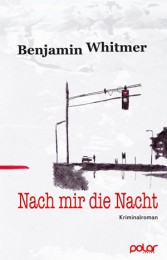 You Were Never Really Here. This is another one I watched because all the crime writers were raving about it on social media. It’s a natural fit for crime writers. I mean, it’s a guy running around killing people with a hammer because they fuck with children. That’s crime writer catnip right there. But it gets weirder and more hallucinatory and nightmarish as it goes on, and that’s when it really takes off. I’ve watched it several times now and still going.
You Were Never Really Here. This is another one I watched because all the crime writers were raving about it on social media. It’s a natural fit for crime writers. I mean, it’s a guy running around killing people with a hammer because they fuck with children. That’s crime writer catnip right there. But it gets weirder and more hallucinatory and nightmarish as it goes on, and that’s when it really takes off. I’ve watched it several times now and still going.  Robert Wilson: Would you have had the moral fortitude to resist?
Robert Wilson: Would you have had the moral fortitude to resist?
In a year where so-called reality has far outstripped any fiction writer’s inventive ability it’s been difficult to know where to turn. So fantastical have been the political and investigative twists, turns, revelations and betrayals on both sides of the Atlantic that any commissioning editor/producer being pitched these ideas (House of Cards x 10) would have laughed the writers out of the room.
It is for this reason that books, films and TV that have offered an alternative reality have had more success in engaging my mind. I’ve had a year of reading Patrick Modiano. I was researching a new WW2 thriller I was writing and discovered his work, which offered a vision of Occupied France I’d never come across before. I’d always bought into the Gaullist myth that France had been all about the Resistance movement from the moment of the devastating invasion until the deliriousness of Liberation. It’s been a sobering trip. Patrick Modiano had an Italian father of Jewish descent who spent WW2 working the Black Market in association with the Carlingue, a criminal underworld in Paris who were responsible for busting resistance networks and making money from goods appropriated from deported Jews. In the early 1970s Modiano wrote the Occupation Trilogy: La Place de l’Étoile, Night Watch and Ring Roads,which brilliantly captures the queasiness of this ugly period of collaboration. He followed this by working with Louis Malle on the screenplay of the movie Lucien Lacombe, a wartime adventure in Vichy France in which a bored young man seeking a more exciting life flirts unsuccessfully with the Resistance and is sucked into the corrupt world of the collaborators and their strongarm, the Milice. This work endlessly raises the question in the reader: would you have had the moral fortitude to resist?
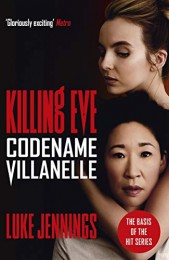 In TV I was particularly drawn to Killing Eve, which on the face of it appeared to be a thriller about Villanelle, a highly trained Russian female assassin working for some mysterious global corporation, whose brilliant talent for killing combines utter psychopathic ruthlessness with devastating charm. Her ‘adversary’, Eve, is married to a decent fellow and is working a desk job for the British intelligence service and ends up investigating Villanelle’s killings whilst falling under a morbid spell of their own creation. Very quickly we realize from the outrageous sexiness of Villanelle’s clothes and the brazen way she shins up a drainpipe on the side of an Italian villa for one of her first kills that we are in an alternative reality. Likewise, Eve’s blundering obtuseness with husband, boss and colleagues, which leads her inexorably but chaotically towards her prey, is hardly the stuff of John Le Carré. And there’s a ribald feminist seam running through it all, which is both hilarious and lethal. A lasting image is of Villanelle in a massive pink chiffon girl’s party dress sitting on a sofa with her legs straight out looking five years old with about 20 killings already to her name. Unmissable.
In TV I was particularly drawn to Killing Eve, which on the face of it appeared to be a thriller about Villanelle, a highly trained Russian female assassin working for some mysterious global corporation, whose brilliant talent for killing combines utter psychopathic ruthlessness with devastating charm. Her ‘adversary’, Eve, is married to a decent fellow and is working a desk job for the British intelligence service and ends up investigating Villanelle’s killings whilst falling under a morbid spell of their own creation. Very quickly we realize from the outrageous sexiness of Villanelle’s clothes and the brazen way she shins up a drainpipe on the side of an Italian villa for one of her first kills that we are in an alternative reality. Likewise, Eve’s blundering obtuseness with husband, boss and colleagues, which leads her inexorably but chaotically towards her prey, is hardly the stuff of John Le Carré. And there’s a ribald feminist seam running through it all, which is both hilarious and lethal. A lasting image is of Villanelle in a massive pink chiffon girl’s party dress sitting on a sofa with her legs straight out looking five years old with about 20 killings already to her name. Unmissable.
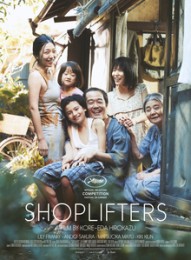 Finally, a film. Shoplifters, a Japanese Palme d’Or winner, features a poverty-stricken group composed of loose ends and misfits who’ve managed to fashion themselves into a family. There’s a grandmother and granddaughter, a man and a woman, and two small children, a boy and a tiny girl, who is the latest addition rescued, freezing, from the balcony of an abusive couple’s flat. They live in squalid rooms in a shed surrounded by modern blocks and their only interaction with the outside world is economic. The man, when he’s not working on a building site, shoplifts with the boy to put food on the table. His partner works for a pittance in a laundry and pilfers stuff left in the pockets of garments. The granddaughter earns money performing in a sex show. The grandmother has a pension but also makes guilt money from the grownup children of her late husband’s second wife. Gradually the film reveals that none of the relationships are as they seem and yet they somehow make a greater success of being an authentic family than the real ones we see. When, finally, the outside world does intrude and the black and white authorities break apart this ‘dysfunctional’ but colourful cocoon we’re neither convinced that their interpretations are correct nor that their intrusion is for the best. Is capitalism everything it’s cracked up to be?
Finally, a film. Shoplifters, a Japanese Palme d’Or winner, features a poverty-stricken group composed of loose ends and misfits who’ve managed to fashion themselves into a family. There’s a grandmother and granddaughter, a man and a woman, and two small children, a boy and a tiny girl, who is the latest addition rescued, freezing, from the balcony of an abusive couple’s flat. They live in squalid rooms in a shed surrounded by modern blocks and their only interaction with the outside world is economic. The man, when he’s not working on a building site, shoplifts with the boy to put food on the table. His partner works for a pittance in a laundry and pilfers stuff left in the pockets of garments. The granddaughter earns money performing in a sex show. The grandmother has a pension but also makes guilt money from the grownup children of her late husband’s second wife. Gradually the film reveals that none of the relationships are as they seem and yet they somehow make a greater success of being an authentic family than the real ones we see. When, finally, the outside world does intrude and the black and white authorities break apart this ‘dysfunctional’ but colourful cocoon we’re neither convinced that their interpretations are correct nor that their intrusion is for the best. Is capitalism everything it’s cracked up to be?
Well-travelled Robert Wilson is the author of the Bruce Medway-, Charles Boxer- and Javier Falcon-novels. In 2003 his novel „Tod in Lissabon“ (A Small Death in Lisbon) won the „Deutscher Krimipreis“. In 2018 he finished a manuscript for a WW II-thriller, set among the exiles in France and Portugal. His appearance at CrimeMag here.
Thomas Wörtche: Zu Asche, zu Staub
2018 war ein Highspeed-Jahr, fast & furious. Ein paar neue wunderbare Menschen sind out of the blue aufgeploppt und haben sich für immer festgesetzt, neue Projekte sind angeschoben, Ballast über Bord geworfen. Ein paar hoffentlich ganz ordentliche Texte geschrieben, ein paar ziemlich sehr gute Bücher verlegt. Politisch too much Bullshit, allüberall; aber das ist ja evident.
Genervt haben intellektuelle Verstocktheit, vorsätzliche Ignoranz, neidisch-missgünstiges Rumgepisse, präpotentes Gequatsche und brutal-blankes Funktionalisieren vorgeblich „sozialer“ Kontakte. Leute, es langweilt nur, richtet aber nichts aus – Ihr könnt es auch sein lassen, echt.
 Ist aber alles Pillepalle gegen ein paar richtig gute Sachen: die deutsche Ausgabe von BERLIN NOIR ist raus, die amerikanische Ausgabe fertig, der „Talk Noir“ im Froschkönig bleibt extrem entspannend, klasse das Kick-Off für den LiBeraturpreis, das Weltempfänger-Literarische Quartett, der „Geheime Monat“ der Brauseboys und sowieso deren Jahresrückblick, der Europa-Preis für Carsten Jensen in Flensburg. „Fuck you very much“ von Aidan Truhen, der Schredder für literarischen Biedersinn, und die teilweise arg lustigen Reaktionen darauf, am lustigsten die, die mit „Moral“ kommen. Und natürlich das Plakat dazu, das eine zeternde Helikopter-Mutter von meiner Wohnungstür entfernt haben wollte. Mit allerliebsten Menschen zur Buchmessezeit im Oktober bis nachts um drei auf einem Main-Boot zu sitzen und ginbenebelt die Frankfurter Skyline anschauen. Mit Dima Wannous & Co. in verräucherten Bars rumhängen, mit Jérôme Leroy einen der intelligentesten Autoren wo gibt kennenzulernen. Mit Oliver Bottini rauszukriegen, dass es in der Oberpfalz ein sehr aufgeschlossenes Publikum gibt. Carsten Klindts Fotos bewundern und Hannah Bechers Bilder auch. Austern-Orgien und das seltsam-gute Gefühl, nach ca. 30 Jahren (what a shame) mal wieder im Theater gewesen zu sein. Und überhaupt die erfreuliche Erkenntnis, dass man auch im hohen Alter noch ein liederliches Leben leben kann und dabei nie vergessen: Memento mori.
Ist aber alles Pillepalle gegen ein paar richtig gute Sachen: die deutsche Ausgabe von BERLIN NOIR ist raus, die amerikanische Ausgabe fertig, der „Talk Noir“ im Froschkönig bleibt extrem entspannend, klasse das Kick-Off für den LiBeraturpreis, das Weltempfänger-Literarische Quartett, der „Geheime Monat“ der Brauseboys und sowieso deren Jahresrückblick, der Europa-Preis für Carsten Jensen in Flensburg. „Fuck you very much“ von Aidan Truhen, der Schredder für literarischen Biedersinn, und die teilweise arg lustigen Reaktionen darauf, am lustigsten die, die mit „Moral“ kommen. Und natürlich das Plakat dazu, das eine zeternde Helikopter-Mutter von meiner Wohnungstür entfernt haben wollte. Mit allerliebsten Menschen zur Buchmessezeit im Oktober bis nachts um drei auf einem Main-Boot zu sitzen und ginbenebelt die Frankfurter Skyline anschauen. Mit Dima Wannous & Co. in verräucherten Bars rumhängen, mit Jérôme Leroy einen der intelligentesten Autoren wo gibt kennenzulernen. Mit Oliver Bottini rauszukriegen, dass es in der Oberpfalz ein sehr aufgeschlossenes Publikum gibt. Carsten Klindts Fotos bewundern und Hannah Bechers Bilder auch. Austern-Orgien und das seltsam-gute Gefühl, nach ca. 30 Jahren (what a shame) mal wieder im Theater gewesen zu sein. Und überhaupt die erfreuliche Erkenntnis, dass man auch im hohen Alter noch ein liederliches Leben leben kann und dabei nie vergessen: Memento mori.
 Film des Jahres: „Weatherhouse“ von Frauke Havemann & Eric Schefter. Postdoomsday-Film, muy avantgarde, absurd, bizarr, sehr intelligent, sehr komisch.
Film des Jahres: „Weatherhouse“ von Frauke Havemann & Eric Schefter. Postdoomsday-Film, muy avantgarde, absurd, bizarr, sehr intelligent, sehr komisch.
Und vier Bücher: „Nichtrechthabenwollen“ von Martin Seel. Ein Exerzitium kreativen Denkens, das zwischen Philosophie und Literatur hin- und hertanzt, Dogmen, Ideologien und Systeme lustvoll sabotiert und zerstäubt.
„Pulcinella oder Belustigung für Kinder“ von Giorgio Agamben. Ein großer, brillanter Essay über Giandomenico und Giambattista Tiepolos „Pulcinella“-Zyklen, also über die Komödie und die Welt, also über die vis comica, also über Leben und Sterben, also über Kontingenz und transzendentale Scheingefechte.
„Vollmond hinter fahlgelben Wolken“, herausgegeben von Anita Djafari und Jügen Boos. Ein Best-of der LiBeraturpreisträgerinnen – was für ein Reichtum an Kreativität, ästhetischer Virtuosität und Poesie.
Cyprian Broodbank: Die Geburt der mediterranen Welt. Von den Anfängen bis zum klassischen Zeitalter. 951 engbedruckte Seiten, Karten, Fotos, Illustrationen, Diagramme … Ein unfaßlich gelehrter Thesaurus wider alle kursierenden Simplifikationen – erdgeschichtlich, menschheitsgeschichtlich, mit allen Implikationen. Ein grandioses und absolut spannendes Konvolut, eine Feier der Komplexität. Maximal erkenntnisfördernd.
Song des Jahres: „Tempelhofer Feld“ von Danny Dziuk und Antoine Villoutreix – eine wunderbare Liebeserklärung mit einem Hauch von Vergänglichkeit, heitere Melancholie.
Serie des Jahres: „Berlin Babylon“. Selten hat mich wadlbeissende Filmkritik so wenig beeindruckt. Und mal wieder ein gutes Beispiel, dass man aus unerheblichen Büchern gute Filme machen kann. Zum Niederknien Liv Lisa Fries, Hammer-Song „Zu Asche, zu Staub“.
Thomas Wörtche, gibt u.a. Bücher heraus, schreibt hin und wieder ein paar Texte.
Helmut Ziegler: Verführerisch serpentinenhaft
Eine kleine Top-Five aus einem mir sehr unentschieden vorkommenden Jahr.
Platz 5: Die neunte Folge der vierten Staffel von »The Affair«. Nach einer großartigen ersten und zwei extrem mauen lässt sich die unvergleichliche Ruth Wilson rausschreiben, verständlicherweise. Die Macher schenken ihr immerhin ein Solo, das Einzige der Serie überhaupt, dass die Herzzerrissenheit der Figur noch einmal exakt auf den Punkt bringt und offen lässt, ob Alison nun Selbstmord beging oder ermordet wurde.
Platz 4: In der Hamburger Kneipe 439 findet regelmäßig ein Krimi-Talk statt, Gastgeber sind Simone Buchholz und Marcus Müntefering. Als der Gast Till Raether beiläufig sagt, Krimis seien doch reine Unterhaltungsliteratur, bringt Buchholz ihren ganzen Charme auf und verkneift sich eine Antwort.
 Platz 3: Unerwartete Querverweise gehören zum Schönsten. Robert Brack schreibt hier über den Neo-Polar und empfiehlt nebenbei Pierre Siniacs »Todesreigen«, ein »mit lässiger Hand geschmiedetes Stück Philosophie aus einem Action-Roman«. In der Tat, ein Epos über Männer auf einer einsamen Insel, neben sich viel Heroin, vor sich viele Haie. Und so elementar darauf zurückgeworfen, ob sie das glauben, was man ihnen erzählt, dass nämlich Konkurrenz das Geschäft belebt.
Platz 3: Unerwartete Querverweise gehören zum Schönsten. Robert Brack schreibt hier über den Neo-Polar und empfiehlt nebenbei Pierre Siniacs »Todesreigen«, ein »mit lässiger Hand geschmiedetes Stück Philosophie aus einem Action-Roman«. In der Tat, ein Epos über Männer auf einer einsamen Insel, neben sich viel Heroin, vor sich viele Haie. Und so elementar darauf zurückgeworfen, ob sie das glauben, was man ihnen erzählt, dass nämlich Konkurrenz das Geschäft belebt.
Platz 2: »Kill Or Be Killed« (Splitter), geschrieben von Ed Brubaker, gezeichnet von Sean Phillips und koloriert von Elizabeth Breitweiser, ist eine Art Spiderman noir, bei dem Dylan, ein depressiver Student, einen Selbstmord überlebt – dank der Hilfe eines Dämons, wie er anfangs glaubt.
 Dieser Dämon fordert jedoch, dass Dylan monatlich einen schlechten Menschen ermordet. Ein brutaler Tanz um hochmoralische Fragen beginnt, der von Dylan, dem Killer wider Willen, abgeklärt und direkt bis zum offen endenden Ende vorgetragen wird: »Erinnert Ihr Euch noch an die Bombe?«
Dieser Dämon fordert jedoch, dass Dylan monatlich einen schlechten Menschen ermordet. Ein brutaler Tanz um hochmoralische Fragen beginnt, der von Dylan, dem Killer wider Willen, abgeklärt und direkt bis zum offen endenden Ende vorgetragen wird: »Erinnert Ihr Euch noch an die Bombe?«
Platz 1: Südkorea steht für scharfe Küche, opulentes Kino – und angeblich auch für schlagkräftige Krimis. Zumindest bei »Die Plotter« vom Kim Un-Su stimmt das. Vom Europa Verlag mit einem Farbschnitt in Form von Blutspritzern veredelt, wird von Raeseng erzählt, dessen Name »nächstes Leben« bedeutet – als Baby in einer Mülltonne in Seoul gefunden, in einer Bibliothek voll staubiger Bücher aufgezogen und heute Auftragskiller von Beruf. Der Übergang von der Diktatur zum Kapitalismus wirkt sich allerdings auch auf seine Branche aus, das traditionelle Geschäftsmodell ist im disruptiven Umbruch. Der Roman steigt mit Raeseng ein, der einen alten General töten soll, statt dessen aber erwischt und dann zu Whisky und Plauderei über Walfang und Leberkrebs eingeladen wird. Ab Seite 30 läuft dann alles ganz wunderbar aus dem Ruder – und dies ist weder straight noch psychologisch erzählt, dafür aber verführerisch serpentinenhaft.
Helmut Ziegler, 1958 geboren, arbeitet als Journalist und Autor in Hamburg. Er hat zwei Jugendromane um „Peng, der Penguin“ veröffentlicht sowie (mit Ko-Autorin Paula Lambert) „Brüste – das Buch“. Ansonsten schreibt er für Geld. Bei CrimeMag erschien 2018 sein legendäres Porträt des „Mister Dynamit“-Autors C.H. Guenter aus dem Wiener von 1987 in einer Neuauflage.





